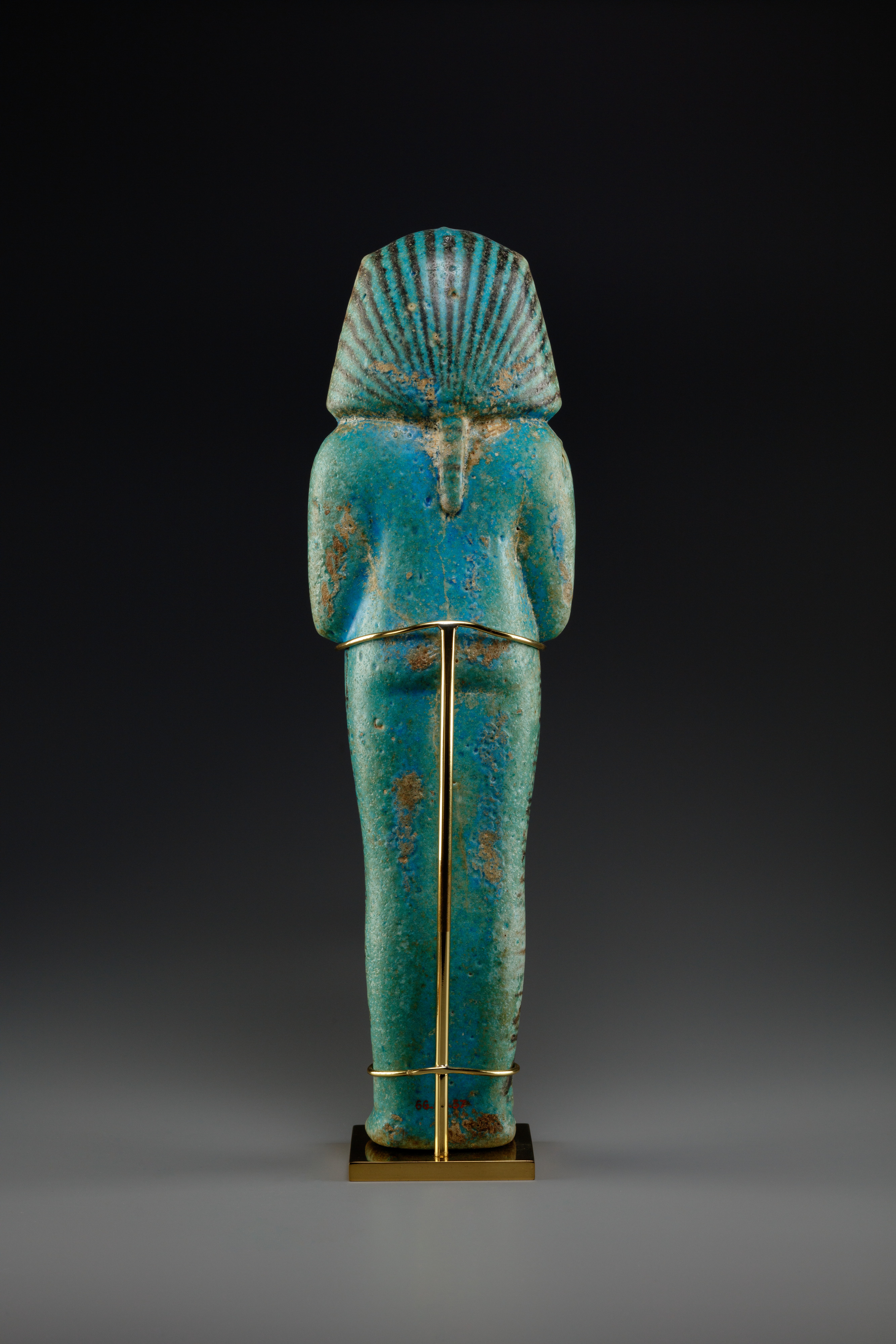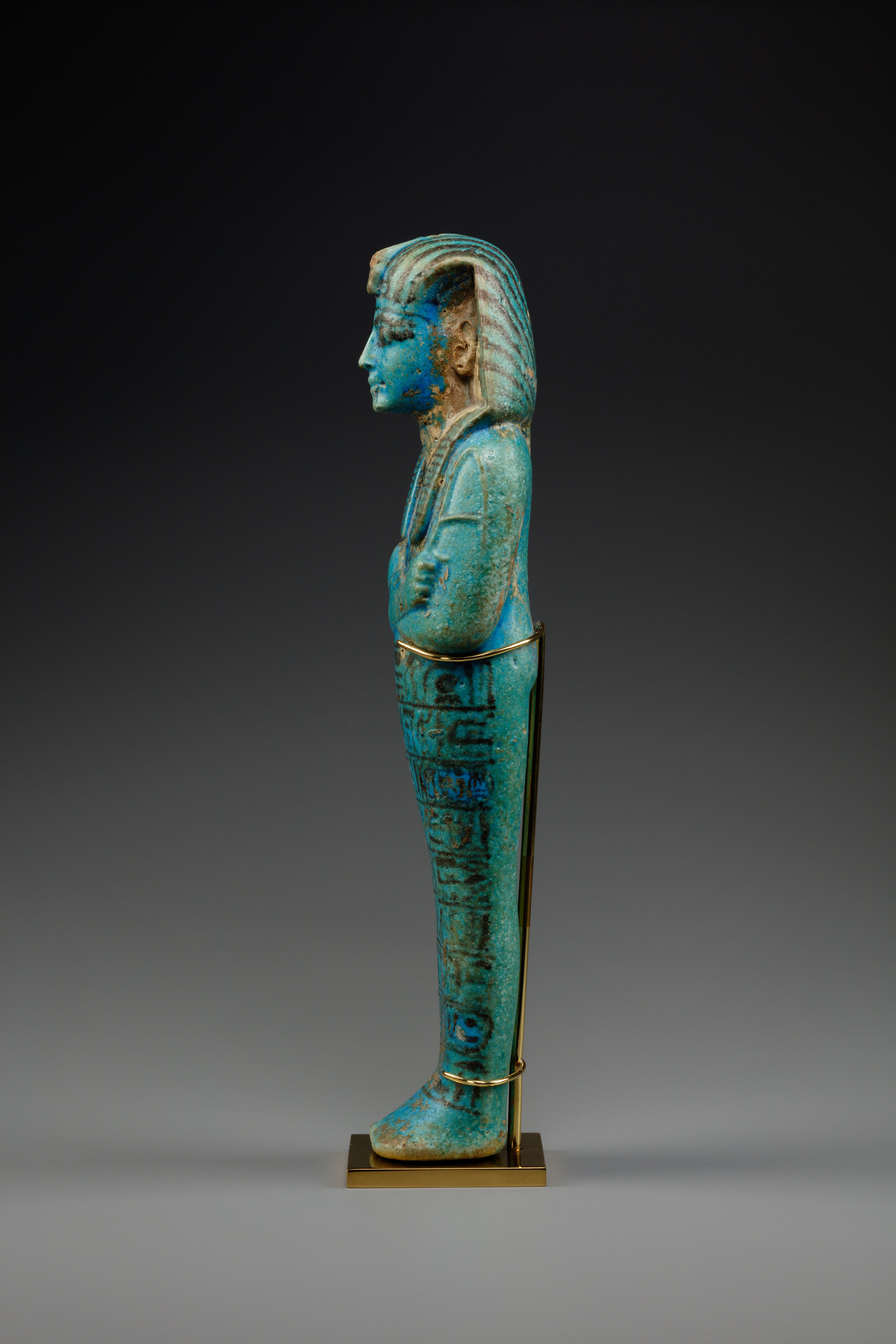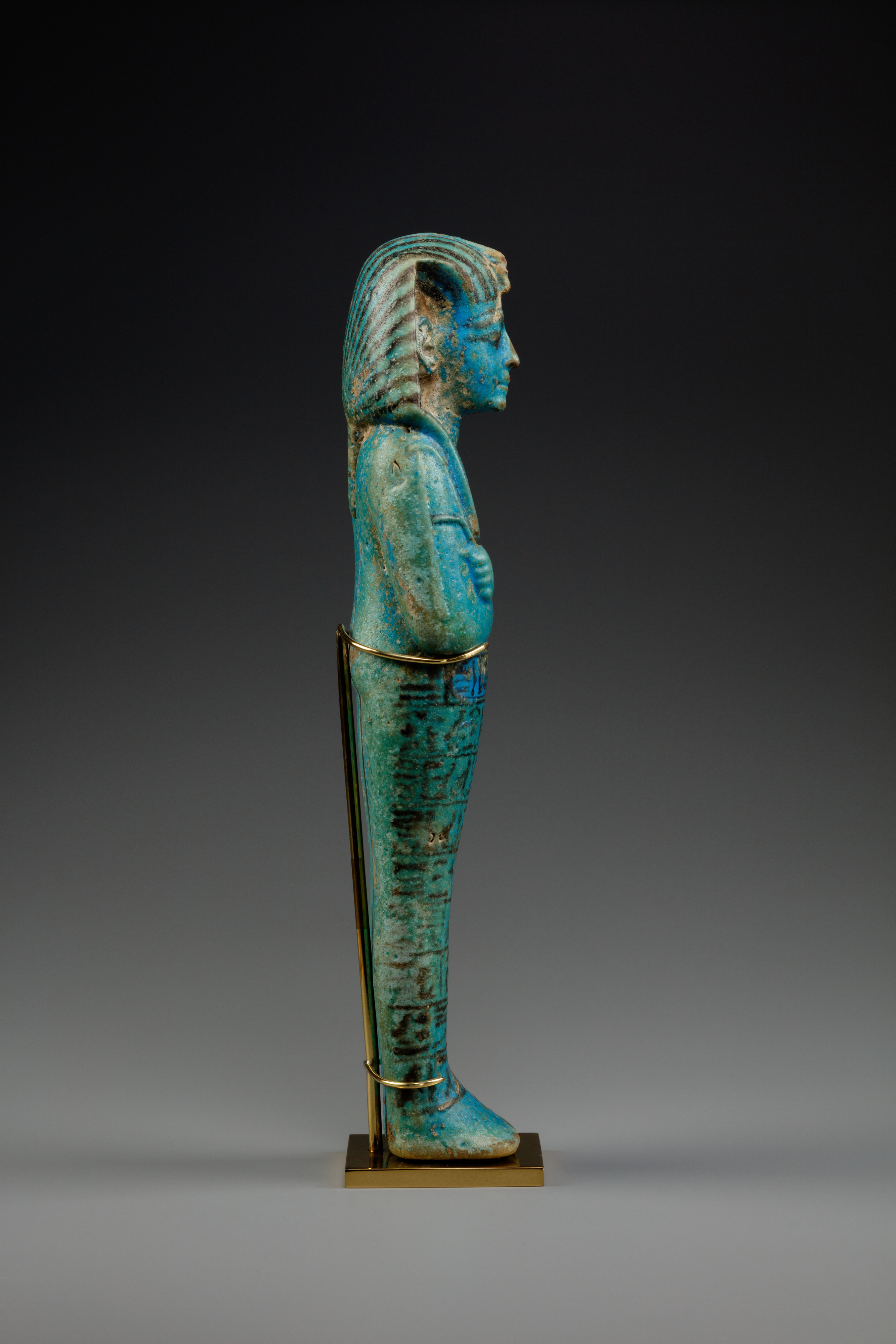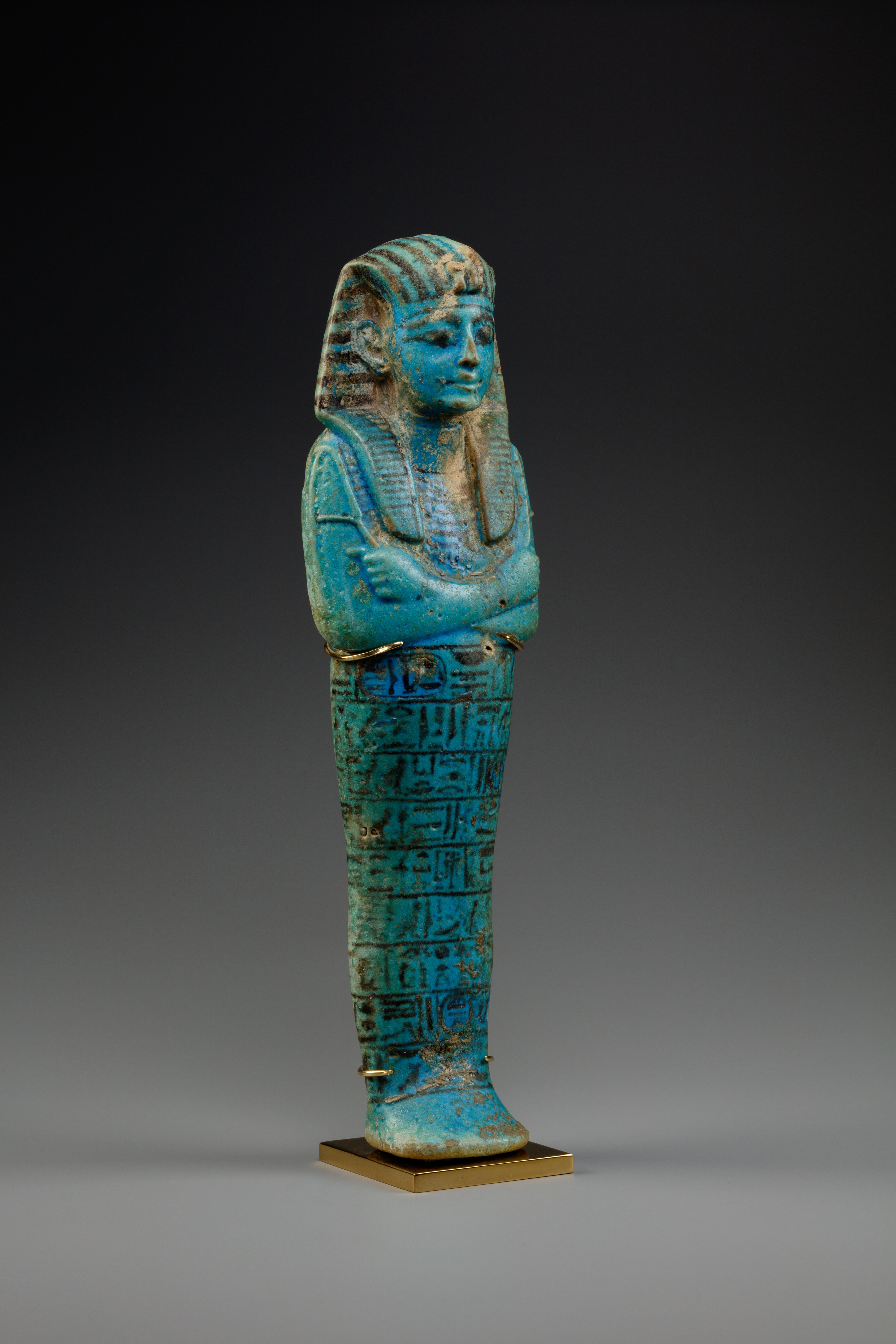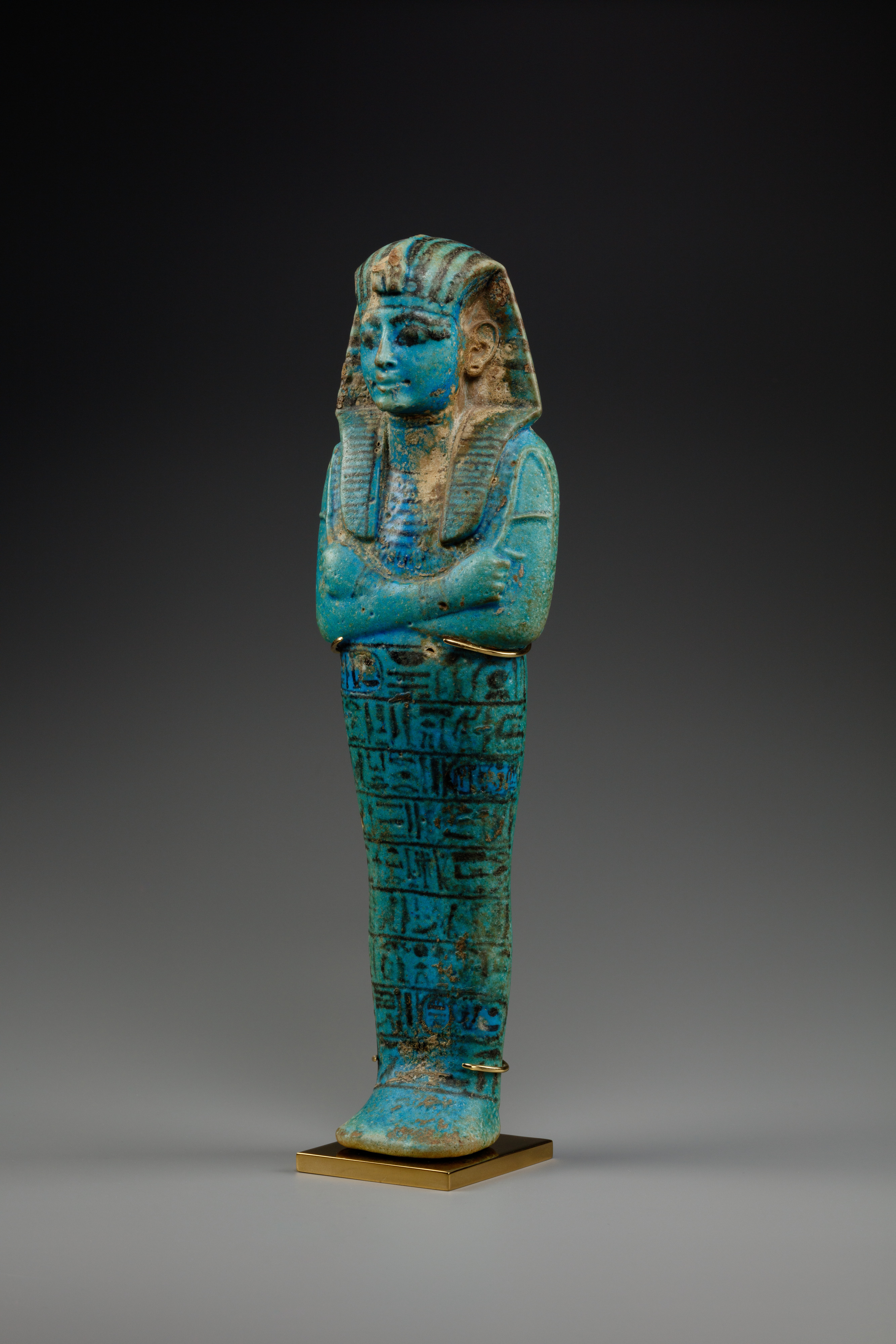Shabti of Ramesses VI
New Kingdom, Ramesside
This shabti was made for the pharaoh Ramesses VI. Shabtis were often inscribed with a spell (also known as chapter 6 of the Book of the Dead) that exhorts them to substitute themselves if the owner is asked to perform menial labor such as till the fields, irrigate the land or transport sand from east to west. To this end, even royal shabtis are often depicted clutching a pick and a hoe, and with a basket hanging over one or both shoulders. In this example, the king holds hoes in both hands, but there is no basket on the back.
The king wears a nemes headcloth with the dual emblem of a cobra (uraeus) and a vulture whose head is now lost, but a narrow rounded neck is still noticeably different from the cobra to its left. The vulture beside the cobra on the king’s head is a New Kingdom phenomenon, the most well-known example of which appears on Tutankhamun's golden mask.
The cartouches appear to have been altered in antiquity from an earlier king, possibly Ramesses III, to judge from the epithets.
Due to rights restrictions, this image cannot be enlarged, viewed at full screen, or downloaded.
This artwork is meant to be viewed from right to left. Scroll left to view more.


